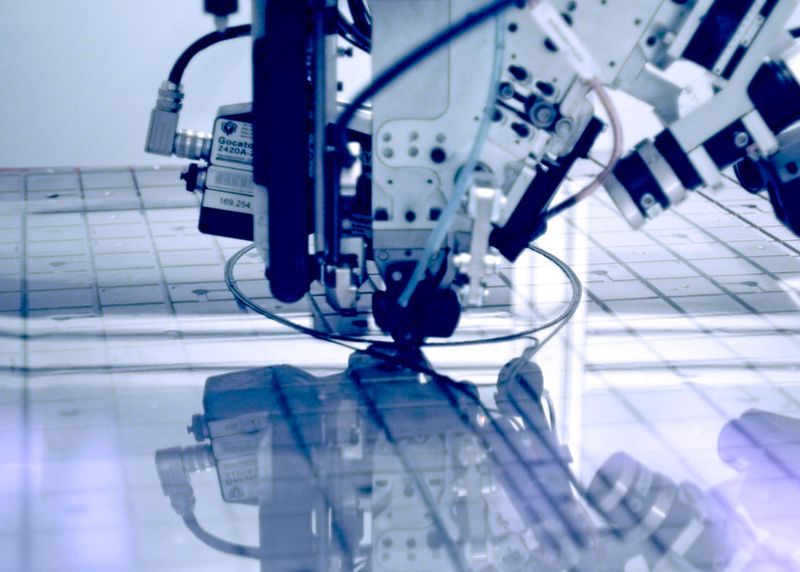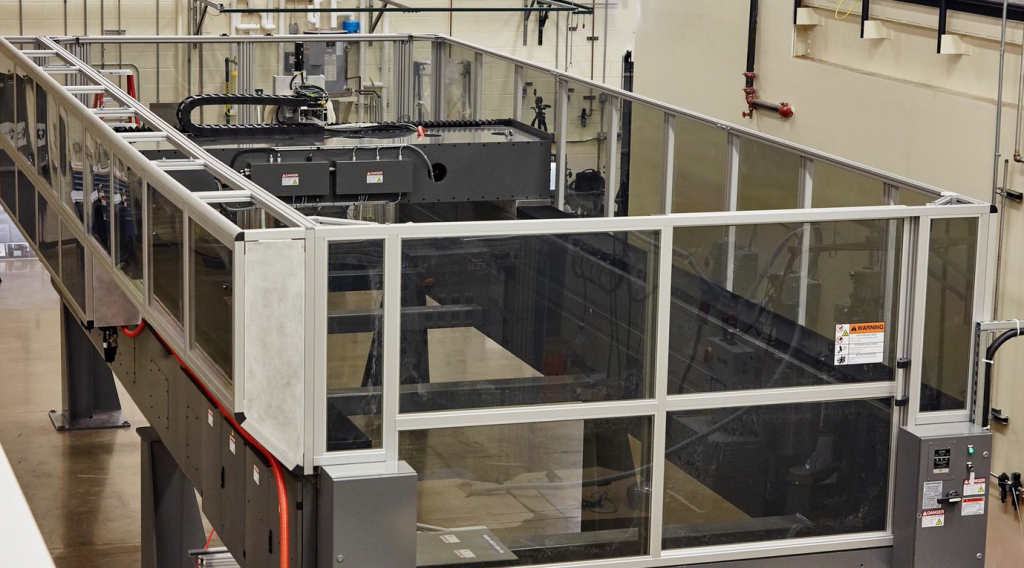In the first part of our series on carbon fiber 3D printing, we discussed how the material is used in the larger world of manufacturing. As we’ve learned throughout this series, carbon fiber (along with other reinforcement materials) is typically used as a low-cost alternative to metal, given its high strength-to-weight ratio. Though the material is found most frequently in the aerospace industry, it is increasingly used in other sectors, such as automotive, sports and construction.
What’s we’ve focused on a bit less in this report so far is how it has been and will be used in 3D printing.
The Benefits of 3D Printing + Carbon Fiber
All of the additive technologies we’ve explored have their unique benefits and drawbacks, with some processes more limited in geometric complexity and others unable to deliver the same strength and stiffness as the rest. However, the advantage that they all have in common is a high degree of automation.
Traditionally, applying carbon fiber reinforcement is a manual and time-consuming process, which can be expensive in terms of labor hours. When it’s performed using industrial automation technology, as found in large aerospace facilities, it is extremely expensive. The highest of high-end automated fiber placement (AFP) machines can cost millions of dollars.
In contrast, 3D printing is a relatively automatic process. Once a CAD model has been finalized and is appropriately set up for fabrication by a given 3D printer, the additive manufacturing (AM) system itself will do most of the work (except for post-processing, loading up materials, configuring the printer, etc.).
With some desktop continuous carbon fiber 3D printers from Markforged, Desktop Metal and Anisoprint priced between $4,000 and $20,000, small businesses and workshops can have access to an automated method for producing carbon fiber-reinforced parts. For much larger firms, emerging systems, like those from Impossible Objects and Arevo, could make batch production much possible. And in either case, the technology will likely be less expensive than AFP.
Applications
Markforged has been on the market the longest and, therefore, has the most case studies demonstrating the range of uses for continuous carbon fiber 3D printing. That has also given it plenty of time to find use cases running the gamut from prototyping and tooling to end part manufacturing.
For example, Brooks, a publicly-traded automation equipment manufacturer, uses 3D printing to prototype end effectors meant to handle fragile goods like products like semiconductor wafers. The company claimed that its previous 3D printer was not capable of printing robust prototypes, but that carbon-fiber-reinforced designs were thin enough and stiff enough for the application.

A 3D-printed lifting tool, made using Markforged carbon fiber 3D printing. Can lift 960 kg. Image courtesy of Markfoged.
Tooling is a popular application for many Markforged customers, given the strength and durability of reinforced polymer parts. These can vary, including small jigs and fixtures to “the world’s first 3D-printed CE-Certified lifting tool”.
Using the X7 3D printer, Wärtsilä 3D printed a lifting tool for moving heavy ship engine parts, such as pistons. The marine and energy firm believed its typical steel machining process to be too expensive and opted for 3D printing a polymer lifting tool reinforced with carbon fiber. The resulting part was 75 percent lighter while capable of lifting 960kg. Wärtsilä believes that it saved €100,000 in tooling alone by printing the part.
In another case, a Canadian energy services company used Kevlar, high-strength, high-temperature fiberglass, and carbon fiber to reinforce tooling on its manufacturing equipment. Using Markforged’s lowest-cost option, the Mark Two, the firm printed 53 different parts for its pad handling machine, such as fuse covers, motor mounts, end effector laser mounts and more. The company estimated a total of CAD$27,000 in savings.

Robotic arm 3D printed with continuous carbon fiber. Image courtesy of Markforged.
The Boston-based startup has also seen its technology deployed for production of end parts. Haddington Dynamics is an engineering startup that uses 3D printing to manufacture parts for a 7-axis robotic arm for such customers as NASA, GoogleX and Toshiba. 3D printing allowed the company to reduce part count on the design from 800 to under 70, including custom swappable 3D printed gripper fingers. To produce parts that are more robust, Haddington reinforces a chopped carbon fiber-filled nylon with continuous carbon fiber.
Though still newer to the market, Arevo has also been making a name for itself in mass production. The Silicon Valley firm is partnering with Franco Bicycles to 3D print continuous carbon fiber single-piece unibody frames for a new line of e-Bikes.

Arevo will be 3D printing a unibody bike frame for Franco Bicycles. Image courtesy of Arevo.
Fortify has devoted an entire business line to a very interesting application for its magnetic approach to composites. The startup has a service for the additive fabrication of tooling for the injection molding industry, though Fortify is relying on a proprietary ceramic material for this application. The material is durable enough that mold could last hundreds to thousands of shots, according to the company. Yet, unlike traditional molds, these parts are delivered in just three days and can be much more geometrically complex.
Other firms are a bit too young to go public with how their early customers are using their technologies, but demonstrator parts have been showcased. Desktop Metal, for instance, displays a variety of tooling, jigs and fixtures on its Fiber-dedicated page. Anisoprint has just three case studies up, but one is a research project that demonstrates the firm’s unique approach to reinforcing only the areas of a part that require added strength, reducing the weight of the part even further than traditional composites or other carbon fiber 3D printing approaches have executed.
As the technology begins to make its way into the marketplace, we will definitely see more applications of carbon fiber 3D printing. One area where it should continue to have a big impact is through the production of tooling and, a bit further along in the technology’s development, end parts. In the next part in our series, we’ll take a look at large-scale carbon fiber 3D printing.
The post State of the Art: Carbon Fiber 3D Printing, Part Five appeared first on 3DPrint.com | The Voice of 3D Printing / Additive Manufacturing.









